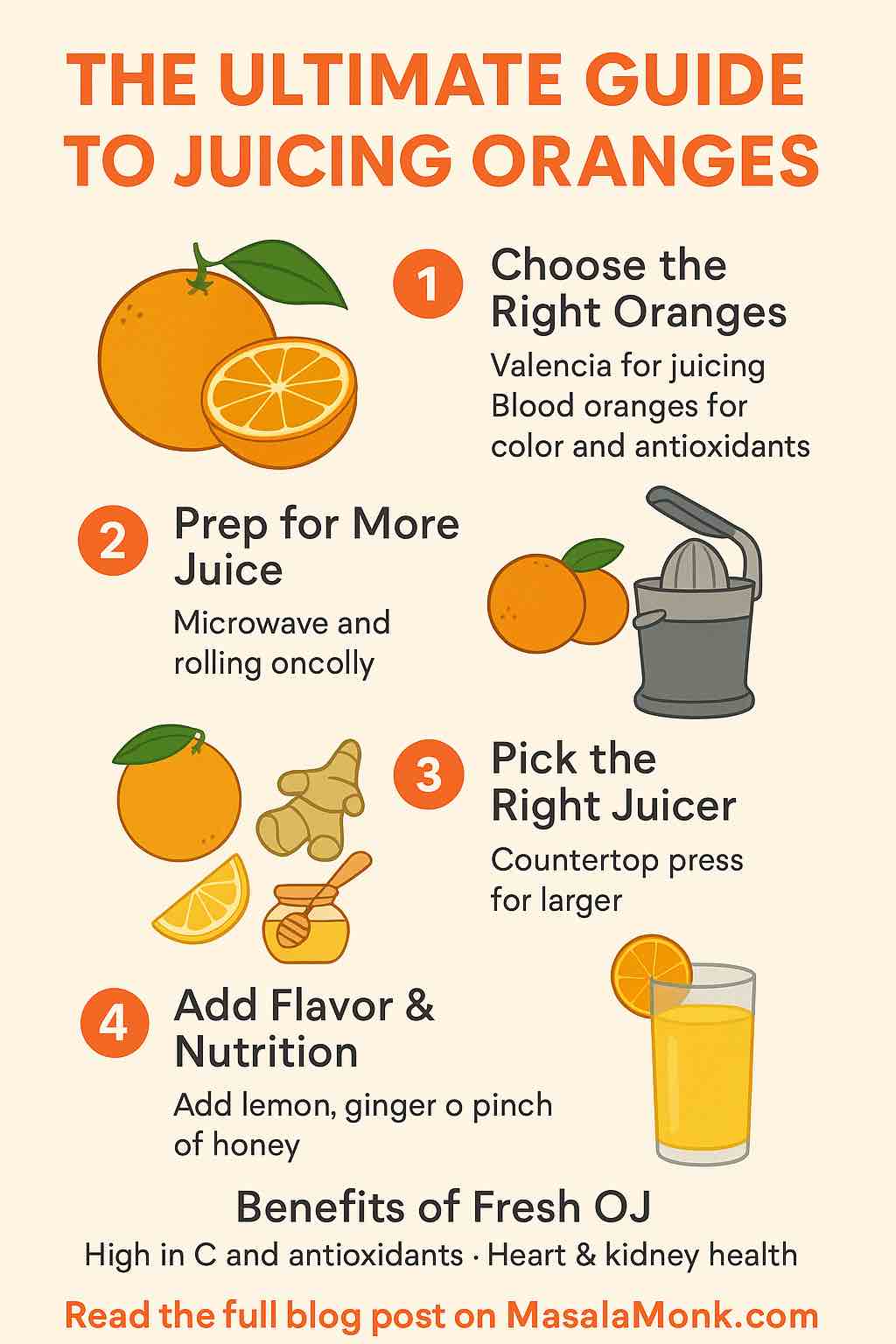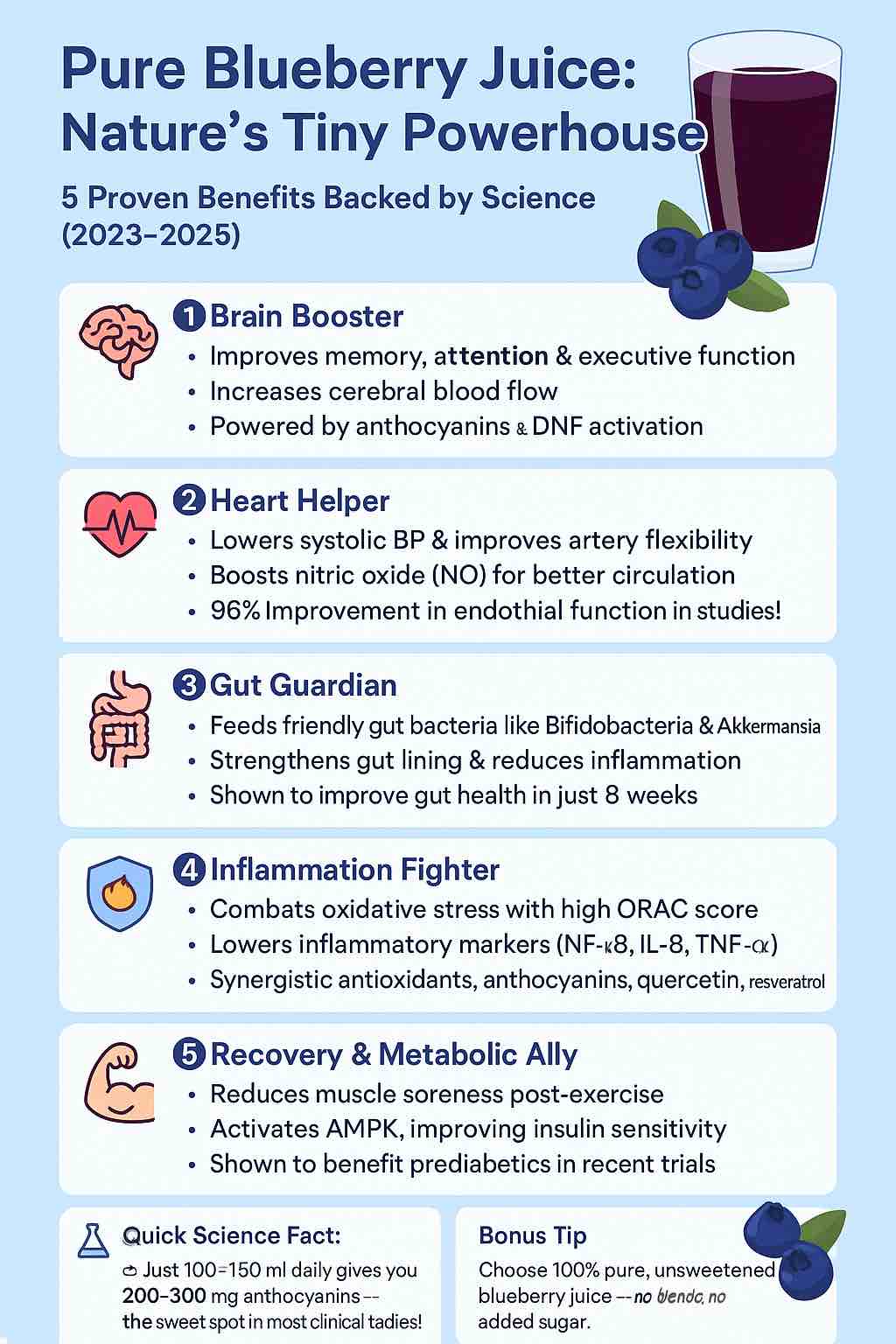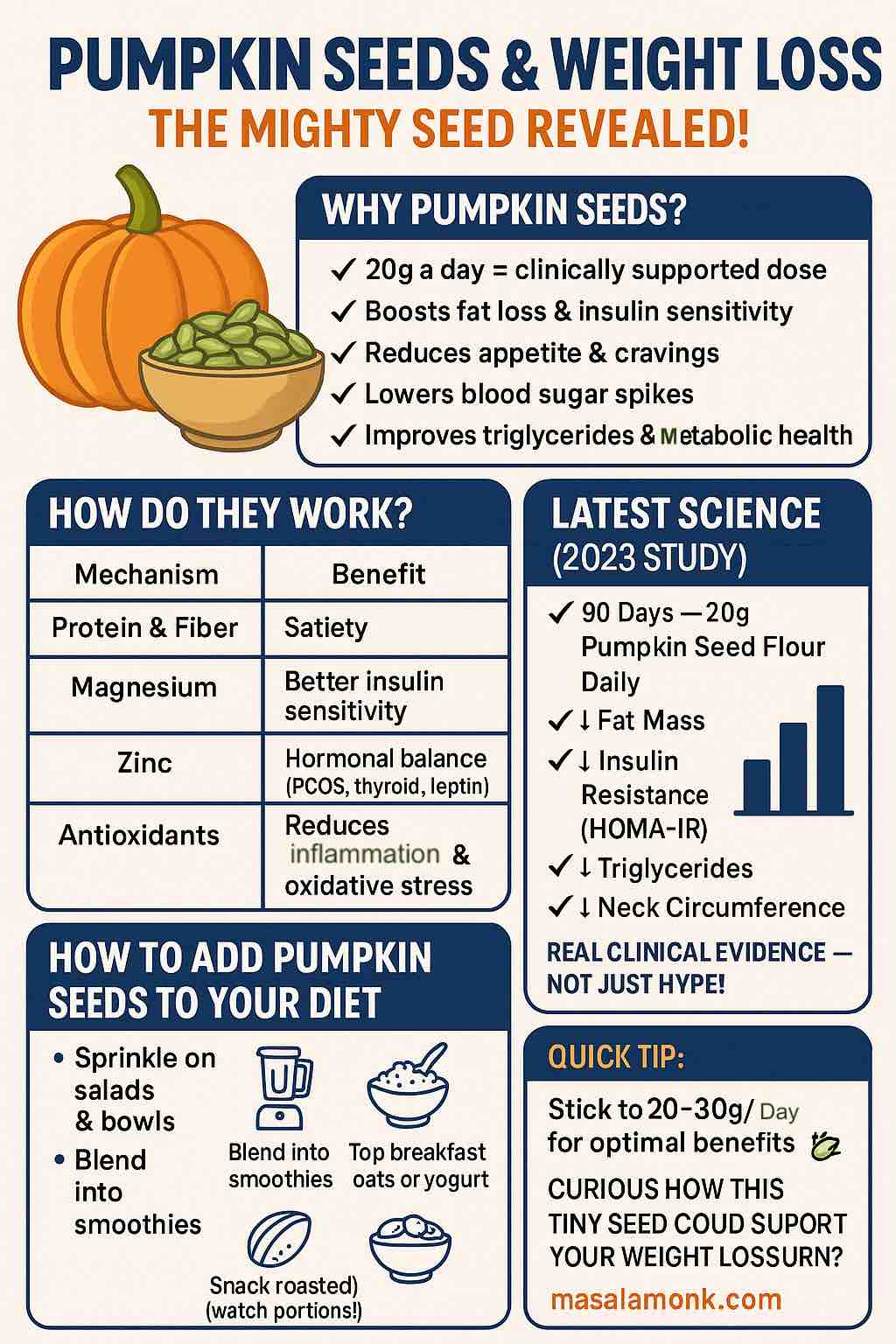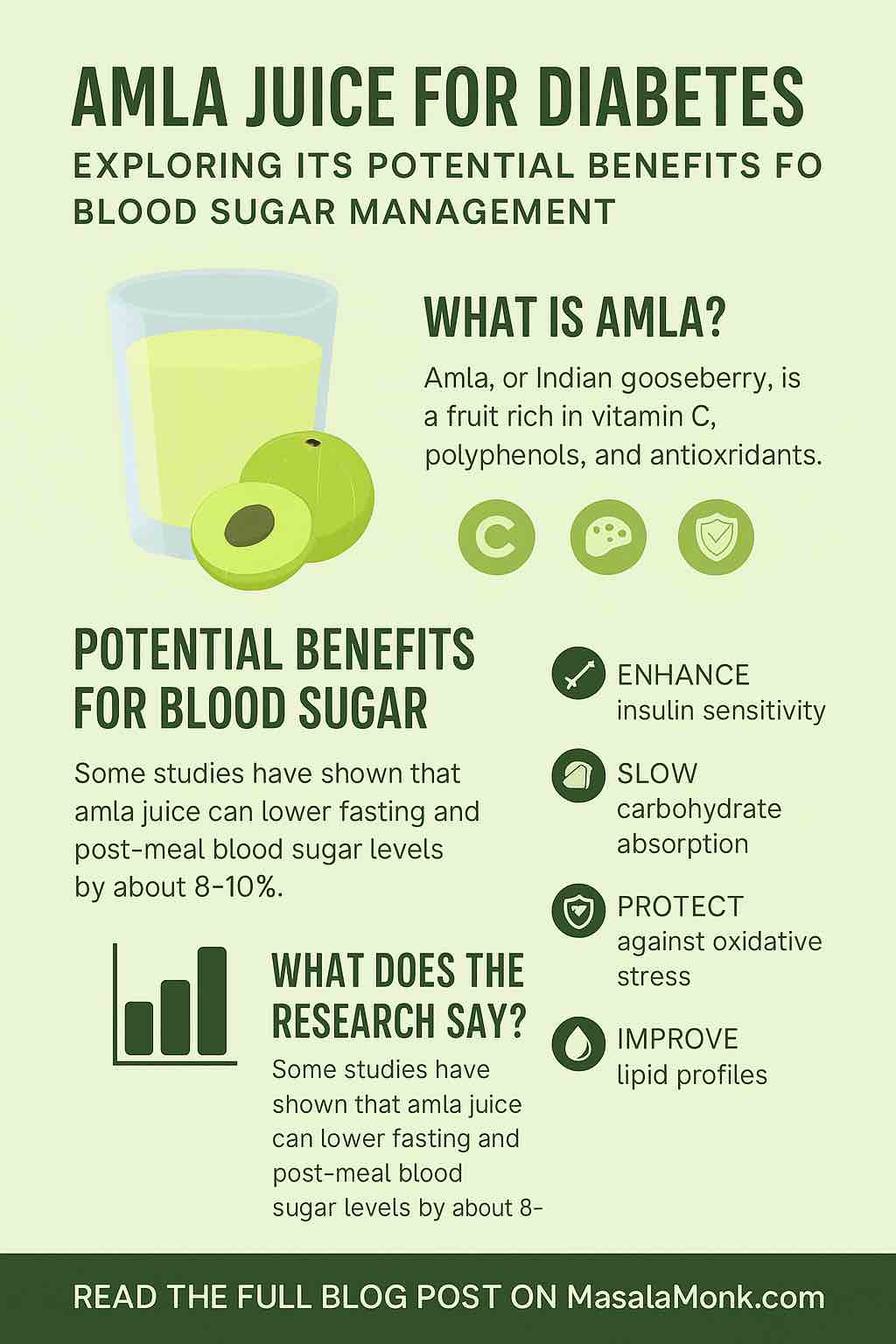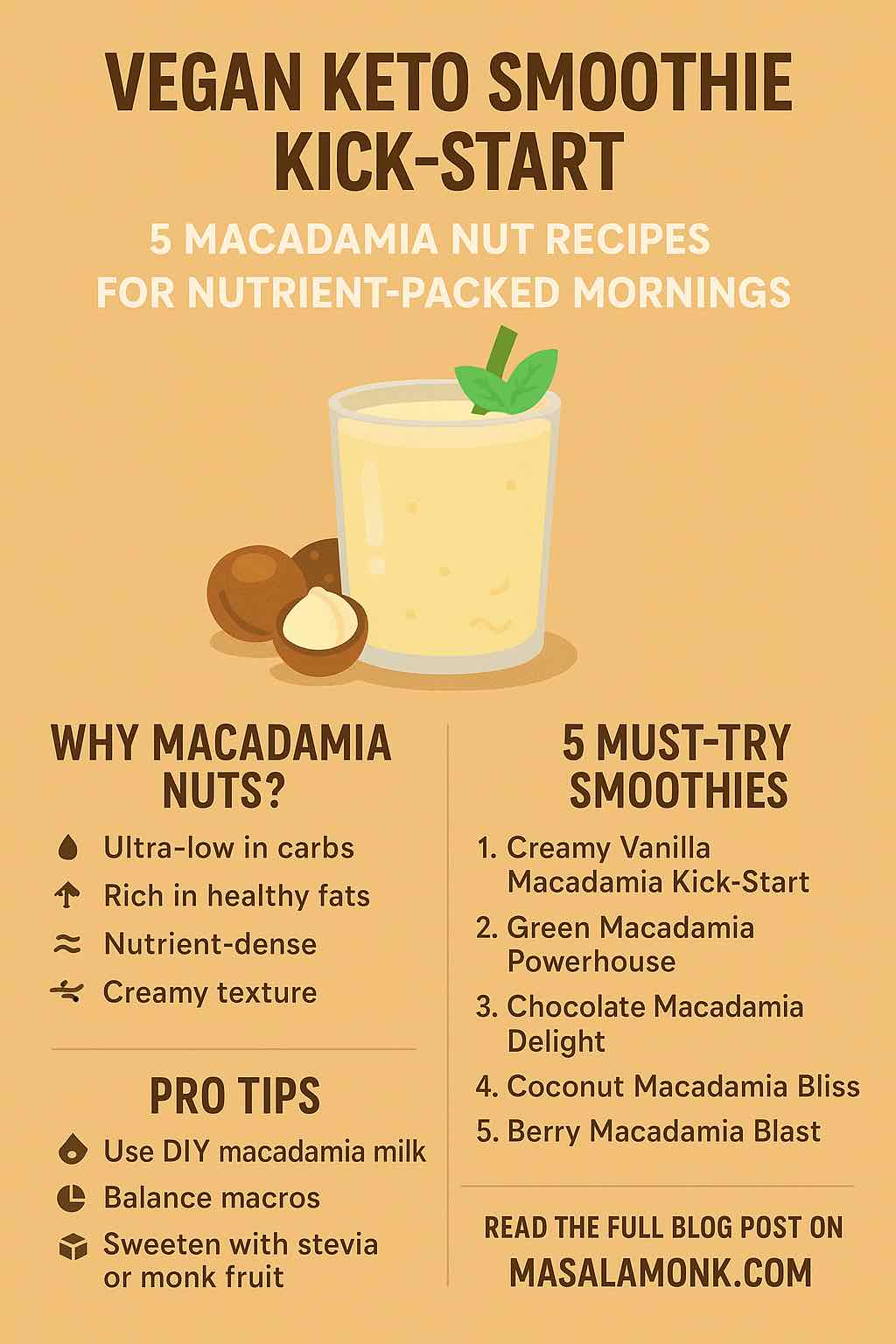
In today’s world of fast-paced mornings and conscious eating, vegan keto smoothies have emerged as a perfect fusion of health, convenience, and flavor. Among the many ingredients available, macadamia nuts stand out for their unparalleled nutritional profile and creamy texture, making them an excellent choice for those seeking a low-carb, high-fat, plant-based start to their day.
In this comprehensive post, we’ll dive deep into:
- Why macadamia nuts are keto and vegan-friendly
- Nutritional benefits
- Pro tips for the perfect smoothie
- 5 delicious macadamia nut smoothie recipes
- Customization options for every taste
🌰 Why Macadamia Nuts Are Perfect for Vegan Keto Smoothies
If you’re following a vegan keto lifestyle, you know how tricky it can be to strike the right balance: high healthy fats, moderate protein, and ultra-low carbohydrates. Here’s where macadamia nuts shine:
- Ultra-Low Carbs: Only ~3.9 grams of carbs per ounce, with about 2.3 grams of fiber, bringing net carbs down to ~1.6 grams.
- Rich in Healthy Fats: 75% monounsaturated fat — great for heart health and stable energy.
- Nutrient-Dense: High in manganese, thiamine, copper, magnesium, and antioxidants.
- Creamy Texture: Blends effortlessly into smoothies, adding rich body and silkiness.
🧬 Health Benefits Backed by Science
Multiple studies support macadamia nuts’ role in:
- Heart Health: Lower LDL cholesterol and triglycerides.
- Blood Sugar Management: Improve insulin sensitivity.
- Anti-Inflammatory Effects: Antioxidants help reduce oxidative stress.
- Weight Control: High satiety index supports appetite management.
Perfectly tailored for anyone looking to maximize nutrient intake while keeping their blood sugar and insulin levels stable.
🥤 Pro Tips for The Perfect Vegan Keto Smoothie
1️⃣ Use Fresh or Soaked Macadamia Nuts
Soaking overnight (6-8 hrs) improves digestibility and creates an even creamier base.
2️⃣ DIY Macadamia Milk
Blend 1 cup of macadamia nuts with 3-4 cups water, a pinch of salt, and optional vanilla extract. No straining necessary unless desired.
3️⃣ Balance Macros
Aim for:
- 70-75% fat
- 15-20% protein
- 5-10% carbs
4️⃣ Sweeteners
Use monk fruit, stevia, or erythritol to keep it keto-friendly.
5️⃣ Boosters
- MCT oil for extra ketones
- Chia or hemp seeds for fiber
- Vegan protein powders for muscle support
🧪 The Base Smoothie Formula
Every great smoothie starts with a solid base you can customize. Here’s the go-to formula:
- 1 cup unsweetened macadamia milk (or almond/coconut milk)
- 1/4 cup raw macadamia nuts
- 1 scoop vegan protein powder (vanilla, chocolate, or unflavored)
- 1 tbsp MCT oil or coconut oil
- Sweetener of choice
- Optional add-ins: avocado, spinach, berries, chia seeds, cacao powder
🍹 The 5 Must-Try Macadamia Nut Smoothies
1️⃣ Creamy Vanilla Macadamia Kick-Start
Ingredients:
- 1 cup macadamia nut milk
- 1/4 cup macadamia nuts
- 1 scoop vanilla vegan protein powder
- 1/2 tsp vanilla extract
- 1 tbsp MCT oil
- Stevia or monk fruit to taste
- Handful of ice
Macros (approx):
- Calories: 350
- Fat: 32g
- Protein: 15g
- Net Carbs: 3g
Perfect for: Simple mornings where you want something fast, creamy, and satisfying.
2️⃣ Green Macadamia Powerhouse
Ingredients:
- 1 cup coconut milk
- 1/4 cup macadamia nuts
- 1/2 avocado
- 1 cup spinach or kale
- 1 scoop unflavored vegan protein
- 1 tbsp lemon juice
- Stevia to taste
- Ice
Macros (approx):
- Calories: 400
- Fat: 35g
- Protein: 18g
- Net Carbs: 4g
Perfect for: Detox mornings and those needing extra fiber, antioxidants, and micronutrients.
3️⃣ Chocolate Macadamia Delight
Ingredients:
- 1 cup almond milk
- 1/4 cup macadamia nuts
- 2 tbsp unsweetened cacao powder
- 1 scoop chocolate vegan protein
- 1 tbsp MCT oil
- Stevia or monk fruit
- Pinch of sea salt
- Ice
Macros (approx):
- Calories: 375
- Fat: 33g
- Protein: 20g
- Net Carbs: 3g
Perfect for: Chocoholics who want indulgence without breaking ketosis.
4️⃣ Coconut Macadamia Bliss
Ingredients:
- 1 cup coconut milk
- 1/4 cup macadamia nuts
- 2 tbsp shredded coconut
- 1 tbsp coconut oil
- 1 scoop vanilla vegan protein
- Stevia
- Ice
Macros (approx):
- Calories: 420
- Fat: 38g
- Protein: 18g
- Net Carbs: 3g
Perfect for: Tropical vibes and maximum MCT intake for sustained energy.
5️⃣ Berry Macadamia Blast
Ingredients:
- 1 cup almond milk
- 1/4 cup macadamia nuts
- 1/4 cup mixed berries (blackberries, raspberries)
- 1 scoop berry-flavored vegan protein
- 1 tbsp hemp seeds
- Stevia
- Ice
Macros (approx):
- Calories: 350
- Fat: 28g
- Protein: 18g
- Net Carbs: 5g
Perfect for: Antioxidant boost while keeping carbs minimal.
🏋️♂️ Batch-Prep for the Busy Week
🔸 Pre-pack dry ingredients (macadamias, protein powder, shredded coconut, seeds) in individual jars or zip-locks.
🔸 Freeze avocado chunks, spinach, and berries in portioned bags.
🔸 Blend fresh each morning with your choice of liquid, sweetener, and boosters.
Result: 2-minute morning routine that keeps you full, focused, and energized for hours.
🚫 Allergy & Caution Note
Macadamia nut allergy is rare but possible. Always consult your healthcare professional if introducing new foods into your diet, especially with keto or vegan restrictions.
🎯 Conclusion: Nutrient-Dense Simplicity
The Vegan Keto Macadamia Nut Smoothie Kick-Start offers an elegant solution for busy individuals seeking:
- Plant-based, low-carb nutrition
- Long-lasting satiety
- Heart and brain health
- Convenience without sacrificing taste
Start experimenting with the recipes above, fine-tune to your preferences, and make mornings the healthiest part of your day.
🔎 10 FAQs for Vegan Keto Macadamia Nut Smoothies
1️⃣ Are macadamia nuts really keto-friendly?
Yes. Macadamia nuts are one of the most keto-friendly nuts. They have around 3.9g total carbs per ounce, but with about 2.3g fiber, their net carbs are only ~1.6g. Their high monounsaturated fat content makes them perfect for keto.
2️⃣ Can I use store-bought macadamia milk instead of homemade?
Yes, but check the label carefully. Many store-bought versions contain added sugars, gums, or preservatives that can increase carb count. Look for unsweetened, clean-ingredient macadamia milk for best results.
3️⃣ How can I make my smoothie creamier without adding carbs?
Add half an avocado, a tablespoon of chia seeds, or extra macadamia nuts. These ingredients enhance creaminess, boost fiber and healthy fats without adding significant carbs.
4️⃣ What is the best vegan protein powder for these smoothies?
Look for plant-based protein powders that are:
- Low in carbs (0–2g net carbs/serving)
- Sweetened with stevia or monk fruit (or unsweetened)
- Made from pea, hemp, rice, or pumpkin seed protein
Brands like Nuzest, Orgain Keto, Sunwarrior, or Vega Sport (low carb versions) work well.
5️⃣ Are berries allowed on vegan keto?
Yes, in moderation. Stick to low-carb berries like raspberries, blackberries, and strawberries. Limit to 1/4 to 1/3 cup per smoothie to stay keto-friendly.
6️⃣ Can I prep these smoothies in advance?
Absolutely. You can pre-portion the dry ingredients (nuts, protein powder, seeds, etc.) into jars or bags. Freeze fresh ingredients like spinach, avocado, and berries. Blend fresh each morning with liquid for best taste and texture.
7️⃣ Do macadamia nuts cause allergies?
Though rare, macadamia nuts are tree nuts and may cause allergies in some people. Always consult your healthcare provider if you have any known nut allergies.
8️⃣ Is it safe to have these smoothies daily?
Yes, as long as you balance your overall diet. These smoothies provide healthy fats, plant protein, fiber, and micronutrients. Rotate recipes to ensure nutritional variety.
9️⃣ How many calories should my keto smoothie have?
For most people, a keto breakfast smoothie should be 300-450 calories, depending on your personal calorie and macro goals. Each recipe above falls roughly within this range.
🔟 Can I add supplements like MCT oil or collagen?
Yes! MCT oil boosts ketone production and energy. Vegan-friendly collagen boosters made from plant peptides or amino acid blends can also be added for skin, joint, and gut health.

